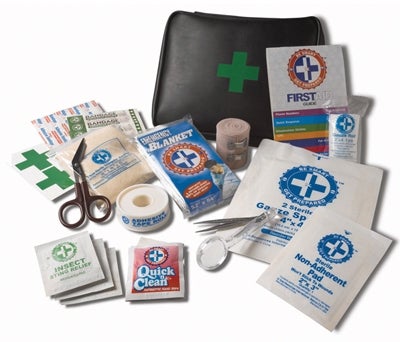As the old saying goes, “Accidents can and do happen.” And even though your business might not involve physical labor, you need to be prepared in case one of your employees has even a minor accident. But it’s fairly simple to make sure your office has the equipment and the knowledge to handle most small workplace injuries.
According to the American Red Cross, first aid skills were taught in Philadelphia and first administered in the workplace in 1891.
“Having these skills and a kit on site may be the difference between an injury and loss of life,” said Janet Read, a training specialist for the Central Massachusetts Red Cross.
According to Read, the first step in the first aid process is to undertake a risk assessment, which is a step-by-step analysis of the work environment and the potential dangers. A Health and Safety representative from OSHA’s compliance protocol agency can be brought to the workplace area to assess first aid needs.
OSHA helps identify if your business needs equipment such as first aid kits with bandages and dressings, defibrillators and eye irrigation kits for chemical spills. Of course, the size and dangers at the workplace determine what emergency response tools are needed, according to Read. The type of business also helps determine how many employees should be trained in CPR, first aid and automated external defibrillators. If the workplace is located within a manufacturing plant, for example, first aid kits are a must, along with eye irrigation systems, extinguishers and defibrillators.
The bare minimum for every business is to have a first aid kit, especially if there are sharp objects, stairs or an area where a spill could occur.
A properly stocked kit provides you with materials you need to deal with injuries to people at work. It is also a good idea to have a first aid box identified with the recognizable cross symbol against a contrasting background because the colors need to be clearly visible from a distance.
The first aid box should be placed in an easily seen and accessible location near a sink.
Depending on the risk assessment of the workspace, you can decide what will be kept in the first aid box, but some common staples include:
• A first aid manual
• 20 individually wrapped, sterile,
adhesive dressings, in various sizes
• Two sterile eye pads
• Four individually wrapped,
triangular bandages
• Six safety pins
• Six medium sized individually wrapped, un-medicated wound dressings
• Two large sterile, individually wrapped, un-medicated wound dressings
• One pair of disposable gloves
Read also recommends taking careful records of any emergency situations.
“If you didn’t write it down, it didn’t happen,” she said. If an emergency situation does occur in which an employee trained in first aid gives attention to a victim, all information needs to be recorded. This is done through incident reports identifying the victim, the first aid staffer, what techniques he or she performed, the outcome and the response time of the emergency paramedics.
Many businesses arrange emergency first aid training for people in the office, although the Red Cross recommends all employees should become first aid ready.
“All people should be trained in first aid especially for at-work situations. You never know when an emergency is going to happen. First aid is a benefit in the workplace and a benefit in daily living,” Read said.
Daniel Burgess was recently an intern in the WBJ’s editorial department. He’s curently a student at Assumption College in Worcester.

